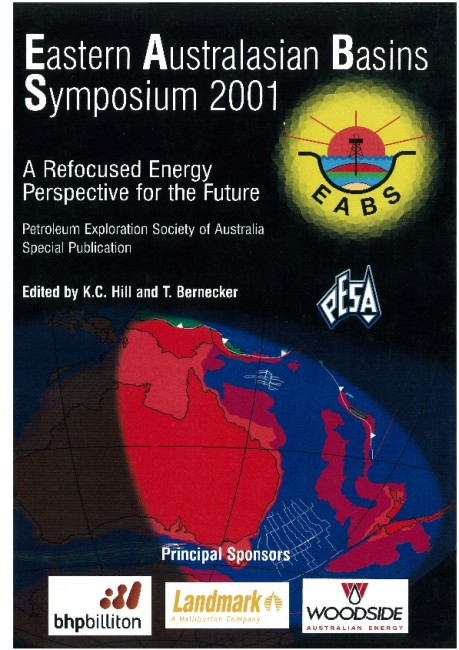Publication Name: Eastern Australian Basins Symposium 2001
Authors: R. Hall
Date Published: November 2001
Number of Pages: 24
Reference Type: Magazine Article
Abstract:
By the Late Mesozoic the Australian continent was surrounded by passive margins. At the east Australian margin spreading began between the Tasman Sea and the Coral Sea. The character of rifting was similar to that which occurred several times during the Mesozoic along the north Australian margin, with the formation of elongate continental slivers, which, from northern Australia, were later accreted to SE Asia. The cause of this unusual type of rifting is not clear.The relative simplicity of the southern and western continental margins might suggest that it would be possible to predict stresses within the plate and the subsidence and inversion history of these margins with some confidence. However, the character of the northern and eastern Australian plate margins is less certain. There must have been subduction zones which imply the existence of volcanic arcs and small plates between the Pacific and Australian plates, as at the present day. During the Cenozoic there were several episodes of arc collision, and plate boundary reorganisations, which are not well understood partly because much of the evidence has been lost during subduction. There have also been important episodes of extension leading in some cases to the formation of ocean crust, and significant strike-slip movements. This makes it difficult to reconstruct the changing balance of forces on the Australian plate with confidence. Extension, subsidence and inversion could have been influenced by changing polarities of subduction, roll-back of subduction hinges, changing lengths of subducted slabs, possible slab break-off, thickening of lithosphere, delamination of thickened lithosphere, dynamic affects induced as the plate passed over subducted slabs, loading associated with collision, and many other consequences of rapid tectonic change. In the past 10 Ma plate boundaries have shifted rapidly, and seismicity and GPS measurements provide a snapshot of the changing tectonic setting. The earlier Cenozoic was no less complex.
Computer animations of a Cenozoic plate tectonic model for SE Asia and the SW Pacific illustrate the likely speed of change and its complexity. At about 45 Ma there were collision events which led to the ophiolite emplacement, and in places, high pressure metamorphism. After 45 Ma Australia moved north accompanied by north-dipping subduction beneath SE Asia and the Philippine-Halmahera-Caroline arcs. East of Australia there was subduction of the Pacific plate, broadly to the west and SW, associated with slab rollback and backarc extension. From about 25 Ma the New Guinea passive margin collided with the Philippines-Halmahera-South Caroline Arc, the Australian margin began to collide with theSE Asian margin, and the Ontong Java Plateau collided with the Melanesian Arc. These collisions caused a major change in the character of plate boundaries between about 25 and 20 Ma. Until about 12 Ma much of the sector between Sulawesi and Fiji was dominated by strike-slip faulting and local subduction but this situation changed at about 12 Ma as old oceanic lithosphere entered the trench west of New Guinea, and new subduction zones developed east of New Guinea. The model illustrates the speed of change, the unexpected interplay of convergence and extension, and the importance of subduction as the cause of change. The animations portray almost simultaneous contraction and extension which may be characteristic of many orogenic belts.


